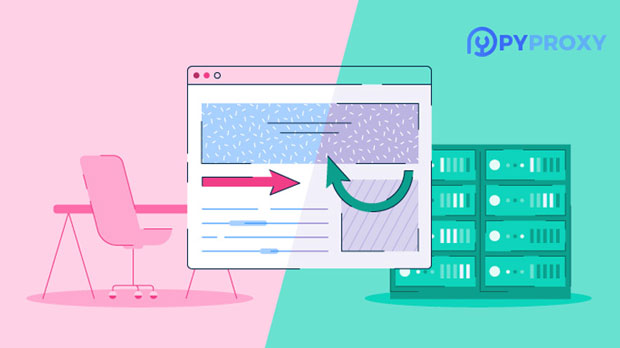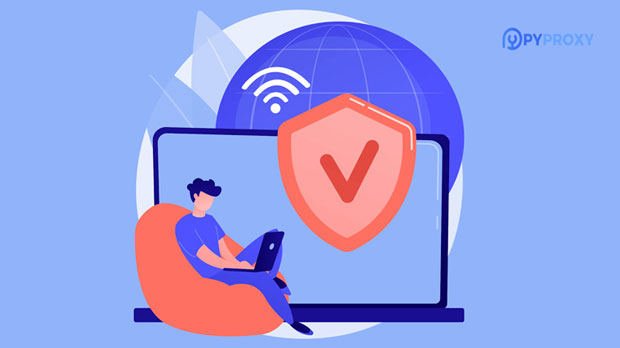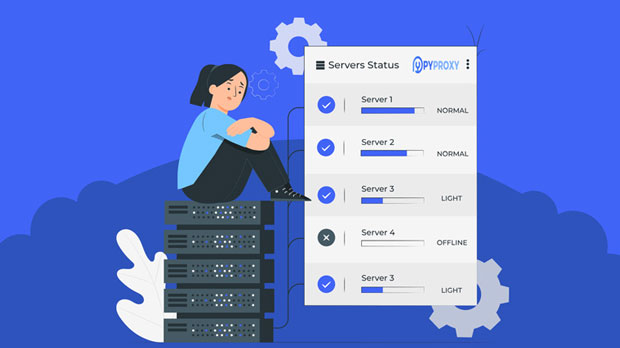Advantages and limitations of using free SOCKS5 proxy software in data scraping
In the modern Internet data capture and web crawler technology, socks5 proxy, as an efficient network proxy, is widely used in data capture tasks. In particular, the free socks5 proxy software has become one of the commonly used tools in many data capture projects because it does not require additional payment. SOCKS5 proxy can not only effectively hide the user's real IP address, increase the anonymity of data capture, but also handle various protocols and traffic, supporting TCP and UDP traffic, greatly improving the flexibility and efficiency of data capture. However, the free SOCKS5 proxy also has some limitations that cannot be ignored, such as instability, security issues, speed limitations, etc. These factors may have an impact on the crawling task in long-term use, so when choosing an agent, users need to weigh its advantages and limitations and make reasonable decisions1. Application advantages of free SOCKS5 proxy software 1. Reduce costs, suitable for small projects and start-up teamsThe biggest advantage of the free SOCKS5 proxy software undoubtedly lies in its "free" feature, which is particularly important for small projects or startups with limited budgets. For data crawling tasks, especially for users who need to handle a large number of website crawling or short-term crawling needs, free agents can help save a lot of cost expenses. Many companies do not require frequent crawling tasks in the early stages of a project, and free proxy software can provide these companies with a financially stress free solution2. Improve anonymity and privacy protection during the crawling processSOCKS5 proxy can not only hide the user's real IP address, but also access the target website through the proxy node's IP address, thereby improving anonymity during the crawling process. When conducting data scraping, the website may perform anti crawler detection based on IP addresses. If a certain IP address requests frequent access, it may be banned or restricted. Using SOCKS5 proxy can effectively bypass these restrictions, avoid IP blocking, and ensure the smooth progress of data scraping tasks3. Support multiple protocols and traffic typesThe SOCKS5 protocol supports various network protocols such as TCP and UDP, enabling it to handle not only HTTP/HTTPS traffic but also more complex application scenarios. For example, for tasks that require higher frequency or larger data transmission, such as downloading videos, crawling APIs, etc., using SOCKS5 proxy can ensure a more stable connection and is less susceptible to restrictions from the target website4. Flexible configuration and multi node selectionFree SOCKS5 proxy software typically provides multiple node options, allowing users to freely switch between proxy servers in different regions as needed, which is very advantageous for crawling tasks that require simulating user access from different regions. For example, when capturing cross-border e-commerce data, users can choose proxy nodes from different countries or regions to simulate real user behavior and reduce the risk of being identified as crawlers2. Limitations of Free SOCKS5 Proxy Software1. Poor proxy stability affects capture efficiencyFree SOCKS5 proxy software often has serious stability issues. Due to the large number of users of free proxy nodes and the high load on proxy servers, network connections are unstable and prone to disconnection, timeouts, and other situations. This instability can seriously affect the efficiency of data retrieval tasks, especially when long-term and high-frequency data retrieval is required. Frequent connection interruptions may lead to data loss or task failure during the retrieval process2. Speed limit, unable to meet large-scale grabbing needsAlthough some free SOCKS5 proxy service providers claim to provide high-speed connections, in reality, most free proxy servers have limited bandwidth and speed. For large-scale data scraping projects, using free agents may encounter serious speed bottlenecks, especially when it comes to quickly scraping large amounts of data. The speed limit of the agent will directly affect the timeliness and task completion of the scraping3. Security and privacy risksThe security of free SOCKS5 proxy software is usually not as good as that of paid services. Free proxy service providers may not provide sufficient security protection, and users may face risks such as data leakage, tampering, and malware infection when using them. Due to the lack of strict management of their services by free proxy servers, hackers may exploit these proxy nodes for data interception or attack, posing a threat to user privacy and data security. Therefore, when using the free SOCKS5 proxy, users need to pay special attention to data encryption and protection measures4. The risk of IP misuseFree SOCKS5 proxy software is usually shared by multiple users with the same IP address, which means that these IP addresses may have been used for improper purposes by others (such as malicious crawlers, spam emails, etc.). In this way, when users are conducting data scraping, if an IP address is banned by the website due to abuse, all users using that IP address may be affected, resulting in the inability to continue the scraping task. This is a common risk when using free agents and cannot be completely controlled5. Lack of technical support and maintenanceFree SOCKS5 proxy software usually does not provide professional technical support services. It is difficult for users to receive timely assistance and solutions when encountering proxy connection issues, slow speeds, or other problems. This lack of technical support and maintenance can cause significant inconvenience for users who require efficient and stable crawlingIII. How to balance advantages and limitations and choose a suitable data capture solution1. Assess the scale and importance of the grasping taskFor small-scale crawling tasks that do not rely heavily on proxy stability, using the free SOCKS5 proxy software can save costs and meet the needs adequately. But for large-scale and high-frequency crawling tasks, the limitations of free agents will be more apparent. In this case, it is possible to consider using paid agent services to ensure stability and speed2. Multi agent combination useTo solve the stability and speed issues of free socks5 proxies, users can try combining multiple free proxies and using proxy pooling technology to rotate different proxy nodes, thereby improving the success rate and efficiency of crawling tasks. In addition, introducing paid proxy nodes as backups can effectively prevent the impact of a single proxy node failure3. Ensure security and privacyWhen using the free SOCKS5 proxy, it is important to strengthen security awareness. Proxy traffic can be encrypted through VPN to protect the security of data transmission. At the same time, avoid using sensitive personal information during the crawling process to avoid the risk of data leakage4. Regularly monitor and replace agentsIn order to maximize the advantages of free SOCKS5 proxy, users can regularly replace proxy nodes and monitor the proxy's IP to ensure the normal progress of crawling tasks. By regularly updating proxy nodes, we can reduce capture interruptions caused by certain IPs being bannedIV. ConclusionThe application of free SOCKS5 proxy software in data capture has obvious advantages, especially for small projects and early-stage enterprises, which can improve anonymity and flexibility while reducing costs. However, due to the limitations of free proxy services in terms of stability, speed, and security, users need to make trade-offs based on their actual needs when choosing to use them. By combining free and paid proxy services, strengthening security measures, and implementing effective proxy management, the advantages of free SOCKS5 proxy can be maximized while avoiding its potential risks and issues
2025-01-06

























































